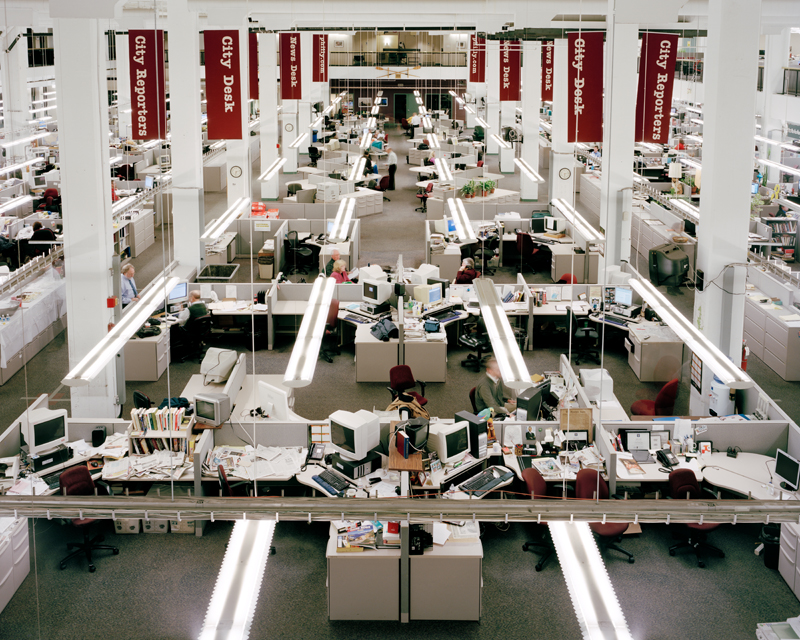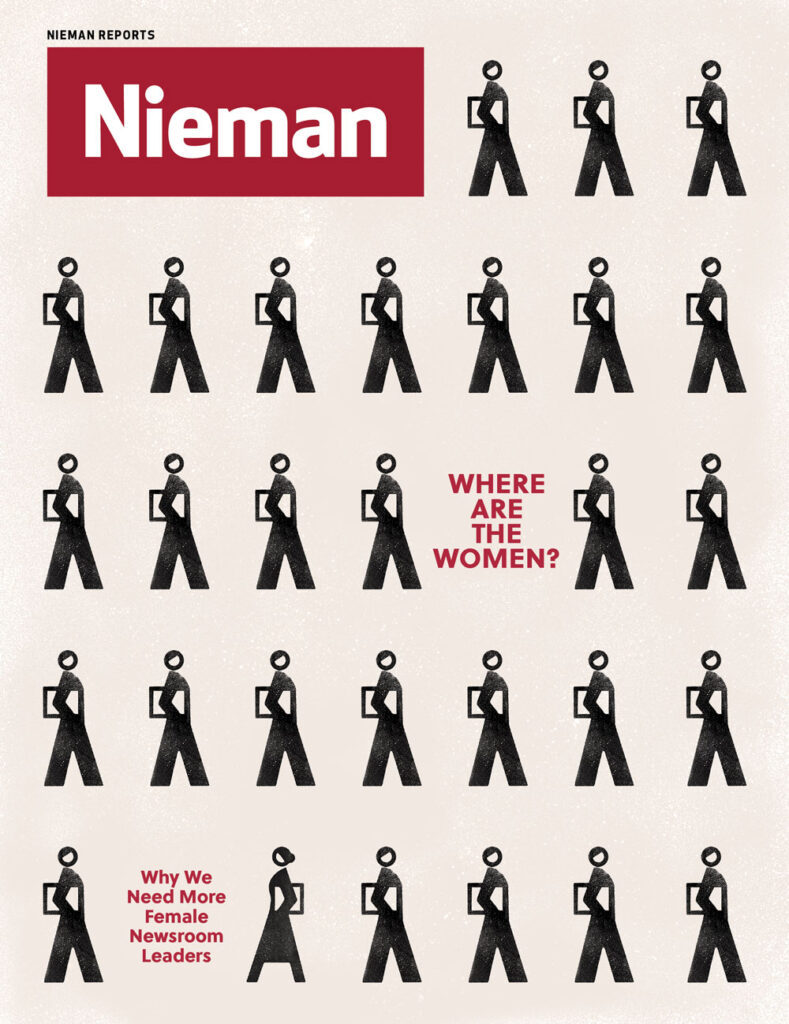To accompany an excerpt from Will Steacy's "Deadline," Nieman Reports asked longtime Philadelphia Inquirer staffer Dan Biddle, a 1990 Nieman Fellow, to summarize the paper's recent history and its current state:
Things are going to get worse before they get worse.” Though columnist Joseph Kraft wrote that a half-century ago about Watergate, the words could apply to The Philadelphia Inquirer’s fortunes when Will Steacy shot the photographs in “Deadline,” to be published this fall. The son of former Inquirer national/foreign editor Tom Steacy, Will spent five years documenting the paper as it faced tough challenges. Five ownership changes in seven years, bankruptcy, a censorship scandal, the sale of our building, and waves of buyouts and layoffs that squeezed a staff of more than 600 down to 200—and things would get worse.
Bowing to pressure from one faction of the latest owners, the Inquirer cut space for daily editorials and op-eds in half. The company’s website, often home to what one reporter called “soft porn,” was fattened with resources while the Inquirer’s starved behind a paywall. Pennsylvania’s governor, seeking re-election, was handed free space as a columnist over our editor’s objections.
That editor, two-time Pulitzer winner Bill Marimow, was told to fire five editors, including me. He resisted and was fired last October. Lawsuits began. Hundreds of journalists signed a petition demanding his reinstatement. The battle raged until May, when the owners who supported Marimow won control of the paper at an auction. One of them, Lewis Katz, 72, died four days later in a plane crash.
Here’s the twist: All through those months, Inquirer journalists kept publishing stories that made a difference. Our new, leased newsroom is lit with rays of hope. And not a minute too soon. A fresh wave of Philadelphia police corruption indictments just landed. Stories by Pulitzer winners Kristen Graham and Sue Snyder have gotten instructional programs rejuvenated, libraries reopened. Craig R. McCoy and Angela Couloumbis revealed, and caused authorities to revive, a secret sting investigation that caught legislators accepting cash.
We’ve learned not to trust stability. Circulation and revenue remain a struggle. But the op-ed page is back at full strength. Some hiring has happened, including a Seattle kid (age 36) whom owner Gerry Lenfest calls a digital “innovator, educator, and collaborator.”
An educator. That suits us. We need to be like a campus right now. Young journalists can teach elders here about harnessing the energies of social media. Elders can return the favor by teaching the standards we learned from “professors” like Gene Roberts, Gene Foreman, and John Carroll. And Marimow. He is back. The newsroom may not look like the one in these photos, but the Inquirer is still here. See you around campus.
Things are going to get worse before they get worse.” Though columnist Joseph Kraft wrote that a half-century ago about Watergate, the words could apply to The Philadelphia Inquirer’s fortunes when Will Steacy shot the photographs in “Deadline,” to be published this fall. The son of former Inquirer national/foreign editor Tom Steacy, Will spent five years documenting the paper as it faced tough challenges. Five ownership changes in seven years, bankruptcy, a censorship scandal, the sale of our building, and waves of buyouts and layoffs that squeezed a staff of more than 600 down to 200—and things would get worse.
Bowing to pressure from one faction of the latest owners, the Inquirer cut space for daily editorials and op-eds in half. The company’s website, often home to what one reporter called “soft porn,” was fattened with resources while the Inquirer’s starved behind a paywall. Pennsylvania’s governor, seeking re-election, was handed free space as a columnist over our editor’s objections.
That editor, two-time Pulitzer winner Bill Marimow, was told to fire five editors, including me. He resisted and was fired last October. Lawsuits began. Hundreds of journalists signed a petition demanding his reinstatement. The battle raged until May, when the owners who supported Marimow won control of the paper at an auction. One of them, Lewis Katz, 72, died four days later in a plane crash.
Here’s the twist: All through those months, Inquirer journalists kept publishing stories that made a difference. Our new, leased newsroom is lit with rays of hope. And not a minute too soon. A fresh wave of Philadelphia police corruption indictments just landed. Stories by Pulitzer winners Kristen Graham and Sue Snyder have gotten instructional programs rejuvenated, libraries reopened. Craig R. McCoy and Angela Couloumbis revealed, and caused authorities to revive, a secret sting investigation that caught legislators accepting cash.
We’ve learned not to trust stability. Circulation and revenue remain a struggle. But the op-ed page is back at full strength. Some hiring has happened, including a Seattle kid (age 36) whom owner Gerry Lenfest calls a digital “innovator, educator, and collaborator.”
An educator. That suits us. We need to be like a campus right now. Young journalists can teach elders here about harnessing the energies of social media. Elders can return the favor by teaching the standards we learned from “professors” like Gene Roberts, Gene Foreman, and John Carroll. And Marimow. He is back. The newsroom may not look like the one in these photos, but the Inquirer is still here. See you around campus.




